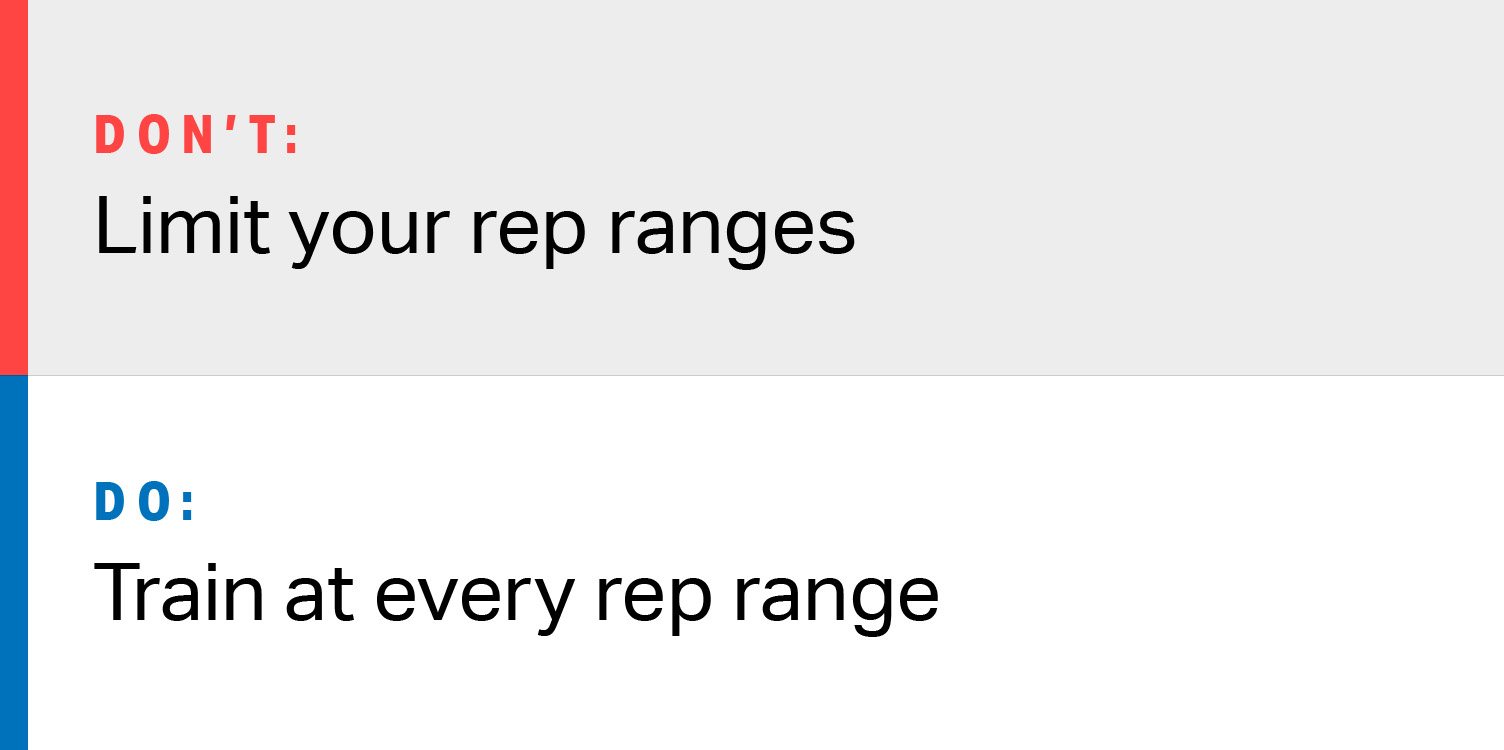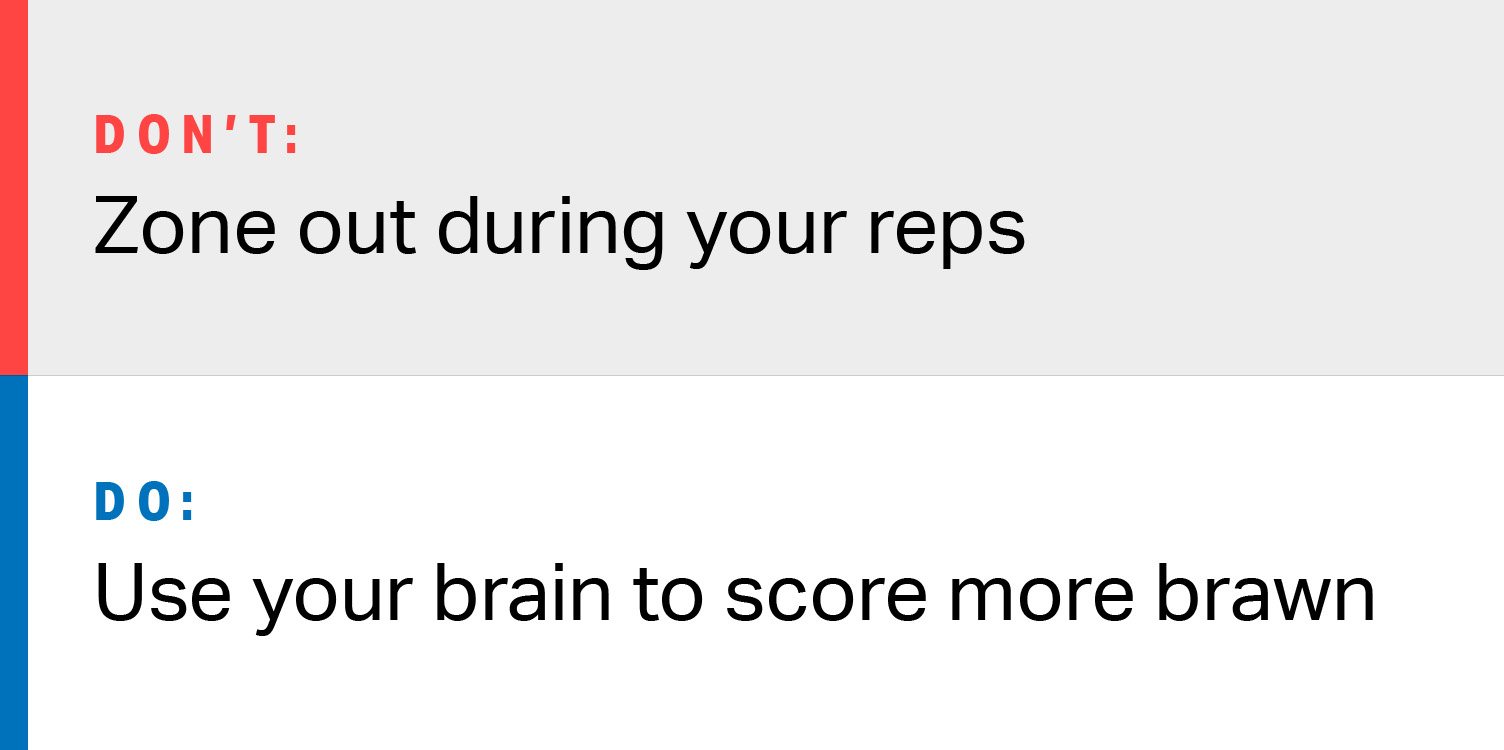Muscle growth (also known as “hypertrophy”) is a unique training goal that requires a different approach than increasing strength or shedding fat. Follow these key do’s and don’ts to help focus your training and increase your odds of success — keeping in mind that the amount of muscle you can expect to add with any hypertrophy program also depends on several factors outside of your control (i.e., sex, age and genetics).

You may have heard of “muscle confusion,” or the idea you need to continually switch up your exercise routine in order to see results. But while it’s fun to give your workouts a constant refresh, it’s not the best approach for building muscle mass.
Progressive overload is the way to go, notes Noam Tamir, certified strength and conditioning specialist and founder of TS Fitness in New York City. This training method has you doing the same program for 4–6 weeks, while manipulating variables like reps and sets, weight, workout frequency and intensity.

When it comes to building muscle, exercise is only half the equation; the other half is rest and recovery. Exercise is where the muscles break down, while recovery (plus protein) is where the growth happens, Tamir says. If you never take a day off, your muscles continue to break down without ever repairing, which only slows — or even reverses — your training progress.
Train 2–3 days per week if you’re doing full-body workouts or 3–4 days per week if you’re following an upper/lower body split routine, as recommended by the American College of Sports Medicine (ACSM). In either scenario, aim to work every muscle group twice per week, giving worked muscles at least one full day to recover before hitting them again.

You might think your muscle gains are dependent on you squeezing every possible last rep out of your set, but lifting to absolute failure (e.g., the point at which you can’t perform another single rep) only increases your odds of injury. What’s more, research in Scandinavian Journal of Medicine & Science in Sports shows it’s unnecessary for muscle growth.
Instead, volitional or technical failure is better. It’s the point at which your form begins to break down. You should end your sets with a few reps in reserve.

Protein is every muscle-seeker’s best friend. “You can’t build muscle without the building blocks,” Tamir says, and those building blocks are amino acids, the units that link together to create protein.
Aim for 1.2–1.6 grams of protein per kilogram of body weight per day, Tamir says. However, if you’re also trying to lose fat, you may want to increase your protein intake so you don’t lose any hard-earned muscle as well. One study in the American Journal of Clinical Nutrition had 20 young men follow a reduced-calorie diet while performing a combination of resistance and high-intensity interval training six days per week, except half of the men consumed higher amounts of protein than the other (2.4 grams per kilogram body weight per day compared to 1.2). Although they were consuming fewer calories than their bodies needed, the men in the higher-protein group managed to add muscle over the course of four weeks, while also losing more body fat than the lower-protein group.

Conventional muscle-building wisdom says you need to lift a moderate weight for 6–12 reps to make gains. Now, a study in Journal of Applied Physiology reveals your target rep range is wider than you might think. Researchers had 49 trained men perform a total-body strength training program. One group lifted weight equivalent to 30–50% of their one-rep maximum for 20–25 reps, while the other lifted 75–90% of their one-rep max for 8–12 reps. By the end of 12 weeks, both groups had packed on equal amounts of muscle.
By training at every rep range, you’ll increase strength at lower rep ranges and boost endurance at higher rep ranges, all while adding muscle. According to researchers, the key to building muscle at every rep range is to take your sets to technical failure.

Focusing on your music or the external environment may help pass the time, especially during higher-rep sets, but new research in European Journal of Sport Science shows you may be able to score more muscle by focusing on your muscles as they’re being worked. By simply making a mind-muscle connection during sets of arm curls for eight weeks, a group of untrained college-aged men saw nearly twice the biceps growth as their unmindful peers (12.4% growth versus 6.9%).
To encourage the mind-muscle connection, think “squeeze the muscle” during each rep, and your gains will follow.




